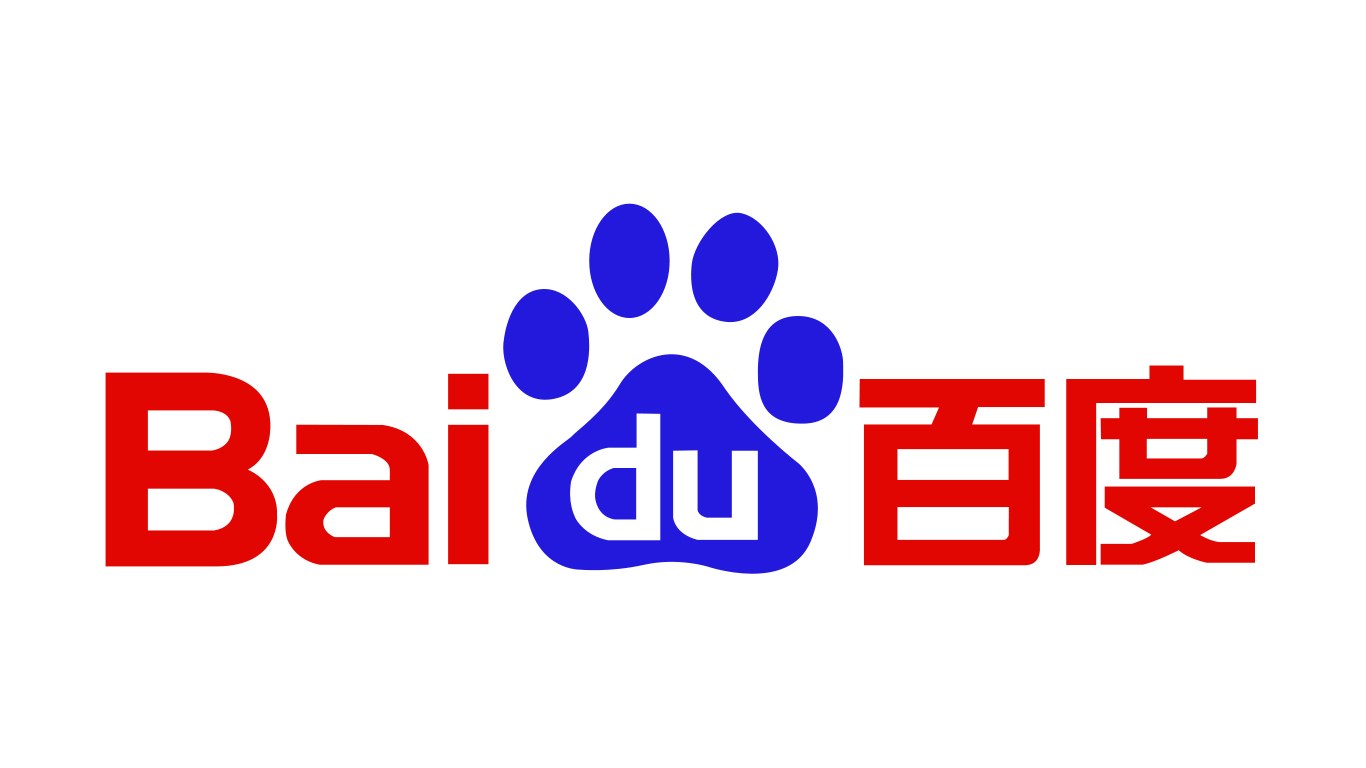
Baidu (NASDAQ: BIDU) stock ended the day down 4.4% after releasing earnings and missing on revenue targets for the quarter but beating analyst estimates on earnings per share (EPS). Baidu’s core marketing business faced headwinds and saw a 2% year-over-year decline, but AI and autonomous driving helped cover that lose.

The Good
- AI driving real results– AI Cloud continued to accelerate in the second quarter, offsetting the ongoing macro headwinds for online marketing revenue and resulting in modestly positive top-line growth for Baidu Core. – Robin Li, CEO
Baidu’s AI initiatives, particularly in cloud services, are proving to be effective growth drivers. Despite challenges in its core advertising business, AI-related revenue is helping to keep the company on a positive trajectory. This underscores the company’s strategic shift towards AI as a crucial component of its future growth.
- Autonomous vehicles segment growing– “Apollo Go autonomous ride-hailing service provided about 899,000 rides from April through June, up 26% from a year earlier.” – Robin Li, CEO
Baidu’s autonomous driving division, Apollo Go, is showing significant growth. Its already a major player in China and plans to expand to 65 cities by the end of next year (currently in 10 cities) and be in over 100 cities by 2030.
The Bad
- Economic challenges– Adjusted earnings per share decreased 7% year-over-year while revenue was flat compared to the same quarter in 2023.
While Baidu managed to beat earnings expectations, the overall financial results were mixed, with a flat revenue growth and a decline in adjusted earnings per share. This points to an underlying struggle in maintaining growth momentum across the board, despite gains in newer business segments like AI.
The Ugly
- Core revenue streams are not growing – Baidu’s online marketing revenue, which is the company’s largest segment, has seen a year-over-year decrease, indicating potential stagnation in its core business. The most concerning aspect of Baidu’s report is the lack of growth in its core revenue streams. Online marketing, historically the company’s bread and butter, is no longer growing at a desirable rate. This stagnation could signal deeper issues within Baidu’s core business model, raising questions about its long-term sustainability in an increasingly competitive and evolving market,

Baidu’s 2Q 2024 Earnings Call Transcript from August 22, 2024
Juan Lin
Hello, everyone, and welcome to Baidu’s Second Quarter 2024 Earnings Conference Call. Baidu’s earnings release was distributed earlier today, and you can find a copy on our website as well as on Newswire services. On the call today, we have Robin Li, our Co-Founder and CEO, Rong Luo, our CFO; and Dou Shen, our EVP in charge of Baidu AI Cloud Group ACG.
After our prepared remarks, we will hold a Q&A session. Please note that the discussion today will contain forward-looking statements made under the safe harbor provisions of the U.S. Private Securities Litigation Reform Act of 1995. Forward-looking statements are subject to risks and uncertainties that may cause actual results to differ materially from our current expectations. For detailed discussions of these risks and uncertainties, please refer to our latest annual report and other documents filed with SEC and Hong Kong Stock Exchange.
Baidu does not undertake any obligation to update any forward-looking statements, except as required under applicable law. Our earnings press release on this call include discussions of certain unaudited non-GAAP financial measures. Our press release contains a reconciliation of the unaudited non-GAAP measures to the unaudited most directly comparable GAAP measures, and is available on our IR website. at ir.baidu.com. As a reminder, this conference is being recorded. In addition, a webcast of this conference call will be available on Baidu’s IR website.
I will now turn the call over to our CEO, Robin.
Yanhong Li
Hello, everyone. Baidu Core’s total revenue grew slightly to RMB 26.7 billion in Q2. Thanks to the continuous acceleration of our AI Cloud business despite the headwinds in our online marketing business. Even with the ongoing investments in AI, Baidu Core’s non-GAAP operating margin improved by close to 2 percentage points year-over-year to 26% and non-GAAP operating profit grew by 8% year-over-year. Thanks to the operational efficiency gains, we continue to implement.
Despite the near-term pressure, we remain fully confident in our strategic direction and the transformative potential of Gen-AI and foundation models. As we move further into 2024, we are happy to observe a significant change as Baidu is scaling of AI to address real-world problems and generate substantial value, both externally and internally. Central to this effort is our commitment to making ERNIE increasingly affordable and accessible.
I’d like to highlight some key points of our progress. The scaling of AI is accelerating at a breakneck pace, reflecting the real value that ERNIE creates for people and for businesses alike. We find that the most tangible benefit from AI comes from the adoption and use of applications built on top of LLMs. Just 3 months ago, we announced that ERNIE handled about 200 million API calls daily. Recently, it surpassed 600 million or over 1 trillion tokens are generated every day. To make ERNIE more affordable, we continue to expand our model portfolio and enhance our model capabilities to meet diverse customer needs.
Last quarter, we launched 3 lightweight ERNIE models, and they have quickly gained traction among enterprises and developers. Building on this momentum, we introduced ERNIE 4.0 Turbo in June. It offers superior capabilities compared to ERNIE 4.0 for typical use cases. Yet it is designed to be much cheaper and faster to run. Our current lineup now includes our flagship models, ERNIE 3.5 and ERNIE 4.0, and the enhanced model ERNIE 4.0 Turbo, and several lightweight models. This diverse portfolio allows us to accommodate the varying needs of our customers, optimizing for performance, cost and latency.
In May, we made a strategic move to make API calls free of charge for 3 lightweight ERNIE models, that’s ERNIE Speed, ERNIE Light and ERNIE Timing. And in July, we significantly lowered the price of API calls for the 2 ERNIE flagship models, ERNIE 3.5 and ERNIE 4.0. This decision is rooted in our commitment to enabling wider access to ERNIE and making AI accessible to all. At the same time, we continue to lower the cost of model inference. One optimization of note this quarter is the upgrade of PaddlePaddle, our open source deep learning framework to Version 3.0. This upgrade significantly improves the framework’s compatibility with our AI infrastructure and ERNIE, which we expect will further help reduce model inference costs in the future.
I briefly mentioned earlier that Baidu will scale AI to address real-world problems and generate substantial value, both externally and internally. I’d like to discuss this in more detail. Externally, we have empowered our AI Cloud customers to achieve greater efficiency and scalability by using ERNIE. Our solutions have enabled clients to optimize their operations and realize significant benefits across various initiatives. Let me offer you some use cases to illustrate the real business problems we have addressed and how we add value to our customers.
In the health care industry, doctor burnout is one of the greatest challenges. By leveraging ERNIE Speed and our model builder, we help the health care automation solution provider to train and fine-tune an industry-specific model that enables automatically generated medical records for doctors. This solution significantly reduces the administrative burden on doctors, a major factor in burnout and enhances clinical efficiency. After 2 months of model’s deployment, doctors using it were able to treat 50% more patients on average.
In the recruitment industry, we have collaborated with a recruiting service company by leveraging ERNIE’s capabilities through API calls, our customers have significantly upgraded the matching process between job description and resume. The smart matching upgrade has reduced the labor cost in this process by over 50%, measured by total working hours, while maintaining high-quality results. This automation allows the customer to expand its services to a broader client base, thereby increasing revenue-generating capability and demonstrating the tangible benefits of integrating ERNIE into its operations. The customer is very satisfied with the result and is now exploring new collaboration opportunities.
In the public service sector, we utilized the ERNIE Speed to deliver tailored, personalized and scalable services, addressing challenges like limited resources and efficiency needs. This is particularly valuable in China’s grassroots public services, where shortages in manpower make large-scale personalized services challenging. We have collaborated with the customer to help over 6,000 villages in China improve public services, offering citizens more personalized and efficient support. Since the large-scale launch of this service in April, its daily usage has surged over 15-fold to more than 2 million times per day, helping locals handle tasks such as household registrations, social security inquiries and tax declarations.
Internally, we have accelerated the renovation of Baidu Search with ERNIE, significantly enhancing our consumer-facing products at large scale. Generative AI is transforming user search experience, pushing beyond traditional boundaries. Since the second half of last year, we have been testing ERNIE-powered features on a small scale. This quarter, our focus has shifted to substantially amplifying search capabilities with advanced AI features. Currently, 18% of search result pages contain generative content, up from 11% in mid-May. These AI generated search results, deliver more accurate and direct answers, enhancing content quality and providing previously unattainable information.
This improvement has led to increased user satisfaction and engagement as more users are now turning to Baidu Search for more complex queries, increasing Baidu Search versatility. AI generated search results may reduce ad impressions and, therefore, have a negative short-term impact on monetization, but they provide significant value to our users. By prioritizing long-term user experience over immediate revenue and profit, we see the strategic implementation of generative search as essential to driving future success.
Our AI investments are fostering deeper user interactions. New interactive features enable users to refine their questions through multi-round conversations, enhancing the overall user experience. Additionally, there is a significant increase in users utilizing text and image-creation tools within search. This development opened doors for long-term value creation.
Last quarter, I mentioned that we planned to accelerate the distribution of ERNIE agents. So far, we are seeing more and more developers, advertisers and partners gather on our platform to develop innovative AI agents. ERNIE agent distribution within Baidu increased dramatically in July, exceeding 8 million daily, more than double the number in May. Currently, the most frequently used agents by users are for content creation, personal insights such as personality testing and tools such as translation and schedule planning. At the same time, we also see a trend of ERNIE agents being more widely developed and applied, both internally and externally.
Our first college application assistant agent is one example of how ERNIE agents are being distributed within Baidu to assist users with complex problem-solving and decision-making. Every year, after China’s National College entrance examination, selecting universities after checking exam results, is crucial for the 10 million-plus candidates. In June, Baidu launched an innovative college application assistant agent, which is designed to meet personalized needs for selecting universities and majors. Following the National College entrance exam, the peak daily active users of the agent approached 2 million, highlighting a significant impact and utility.
While all these new features for more sophisticated user needs have not yet been monetized, they are transformative force for search and are crucial for our future success. This strategic focus positions us to capture substantial long-term growth opportunities, transforming the usage of search and solidifying our leadership in the AI-driven search landscape.
Our one-stop shop for document creation is another example of how Baidu scales AI to address real-world problems and generate substantial value. As our most pioneering internal product to improve generative AI and LLM, Baidu Wenku is now reaping the benefits of its product renovation efforts. In the second quarter, Wenku’s subscription revenue marked a year-over-year increase in high teens. AI is rejuvenating the platform with comprehensive content understanding and generation capabilities while continuously improving in versatility. Since May, Baidu Wenku has launched new features resonating particularly well with young users, such as crafting, [ lensing ] documents with tens of thousands of characters, building and editing PowerPoint presentations and creating children’s picture books with natural language guidance.
The highlight — the heightened engagement underscores Wenku’s appeal to the next generation and signals promising future growth.
Moving from the digital realm to addressing changes in scaling AI in real — in physical world, our decade-long dedication to autonomous driving innovation and long-standing investment is bearing fruit. Apollo Go, our autonomous ride hailing service has recently achieved 2 significant breakthroughs, is establishing a robust foundation for making commuting more affordable and benefiting more people through technological innovation.
First, since June 19, building on our proven track record of safe operations, Apollo Go has successfully transitioned to offering 100% fully driverless ride-hailing services in practically the entire Wuhan municipality. This means all vehicles are now operating without the need for human safety officers on board, a major step forward in making autonomous ride-hailing business commercially viable.
Another milestone was the large-scale open road testing of our 6th generation autonomous vehicle, the RT6. Equipped with a battery swapping solution, RT6 is competitively priced at below USD 30,000 for mass production. After thorough testing, we plan to officially roll out RT6 into our fleet, establishing a strong foundation for further substantial cost reductions in our Apollo Go operations.
All in all, our efforts to scale AI to solve real-world problems, fully aligns with our broader vision of creating a more efficient, equitable and sustainable future. Looking at how our efforts are yielding promising results, we believe we are well positioned to capitalize on the growing demand for AI-driven applications. By leveraging AI to address complex challenges, we can continue our journey of innovation and growth and create long-lasting value for our stakeholders.
I want to thank our employees for their efforts and contribution and our customers and shareholders for their trust in us.
Now let me recap the key highlights for each business for the second quarter. AI Cloud revenue reached RMB 5.1 billion, marking a consecutive acceleration to 14% year-over-year growth while sustaining non-GAAP operating profitability in the second quarter. The strong growth is mostly attributable to the following two factors. First, Gen-AI-related revenue continued its robust momentum, accounting for nearly 9% of our total AI Cloud revenue in Q2, up from 6.9% in the previous quarter. As more enterprises integrate Gen-AI and foundation models into their daily operations, they increasingly come to us, thanks to our reputation as China’s most advanced and cost-effective AI infrastructure providers and our excellent mass platform for model training and inference.
During the quarter, we further advanced our AI infrastructure management, enhancing our ability to combine GPUs from more vendors for optimal training and hosting of models. This ensures flexibility, reliability and efficiency, positioning us to capture a larger share of the GPU cloud and LLM market. We also continued to develop the [ tool case ] on our mass platform for our customers and partners, enabling the ERNIE family of models to deliver a superior price, performance ratio. We’re proud that our model builder now supports the full model development life cycle, including data management, fine-tuning, evaluation, optimization and prompt engineering. A major upgrade has been the introduction of diverse hybrid training data sites. Training from general to specialized industry-tailored data sets. This enables efficient fine-tuning and ensures high performance for industry-specific applications, while retaining strong general LLM capabilities.
Also, thanks to our continuous refinement to app builder, the number of AI native apps on our cloud now runs into the hundreds of thousands. These applications span a wide array of industries and scenarios from online education and e-commerce to public service sectors. And are integrated into both online platforms and smart devices.
The second major driver of AI Cloud revenue acceleration is cross-selling of our CPU cloud services to our GPU cloud customers. In Q2, we continue to observe an increase in CPU spending among our GPU cloud customers. We see that our strong brand recognition in GPU cloud is helping us win businesses in the CPU cloud industry. This revenue acceleration, AI Cloud business continued to deliver positive non-GAAP operating profit and improved margins. Legacy cloud saw margin expansion and Gen-AI-related businesses are expected to have higher normalized margin compared to the traditional cloud service. Overall, we remain confident in the strong growth outlook for our AI cloud revenue, and we aim to continue generating non-GAAP operating profit going forward.
For our mobile ecosystem, Baidu Core’s online marketing revenue declined by 2% year-over-year in the second quarter due to broader macroeconomic challenges, competition, and our aggressive AI-driven search renovation. Key offline verticals such as real estate, franchising and automobile remained subdued. Despite these challenges, we remain committed to optimizing our operations to maintain both a healthy margin and cash flow while accelerating the AI native transformation of our products.
In Q2, incremental ad revenue from Gen-AI and LLM enhancements to our advertising system continue to grow quarter-over-quarter, driven by the ongoing reconstruction of our monetization system and marketing platform. We envision ERNIE agent as a compelling opportunity for our app business. ERNIE agent has the potential to revolutionize our traditional CPC model into a more efficient CPS model in the future. As it transitions from presale consultations to catalyzing more direct sales on our platform. Serving as a virtual salesperson, ERNIE agent empowers advertisers to provide more personalized content and product introduction. Thereby ensuring better presale consultation. Early adopters from the education, legal and B2B sectors are pioneering ERNIE agent and have already seen a notable increase in effective sales leads.
We are proud to see that 16,000 advertisers already have their own ERNIE agents, which are now being distributed on the Baidu platform. Looking ahead, we believe ERNIE agent is poised to deepen its penetration and broaden its reach across more sectors, unlocking promising potential for our advertising business.
And moving into intelligent driving. I mentioned earlier that Apollo Go has made remarkable breakthrough in Wuhan, it achieved 100% fully driverless operations in practically the entire municipality, reducing Q2 cost per vehicle by more than half compared to Q2 of last year. On top of that, Apollo Go has started scalable testing of the latest RT6 vehicles on open roads. These 2 factors are critical milestones in our strategy aimed at reaching UE breakeven in targeted cities.
In addition to cost reduction, Apollo Go’s operations continue to offer more expedient services. In Wuhan, its services is now available to 9 million people. The number of Apollo Go pickup points at the end of June has increased by over threefold from the previous quarter, enhancing accessibility and convenience for passengers. The deepening of our operational footprint and increased station density has propelled utilization rate for our vehicles, significantly driving up the daily ride per vehicle and the distance per ride. Nationwide, Apollo Go provided about 899,000 rides to the public in the second quarter, marking a 26% year-over-year increase. In July, the cumulative rides provided to the public surpassed 7 million. Even with these milestones, our share in the entire ride haling service market is very small. It will take many years for us to reach a meaningful market share in China or elsewhere.
Looking ahead, we are committed to providing increasingly affordable, convenient and safe travel for more passengers and drive long-term sustainable growth. We remain resolute in executing on our operational strategy, aimed at boosting efficiency and steering our intelligent driving business towards profitability.
In summary, by extrapolating the ongoing progress from leveraging ERNIE to revolutionized product usage and transformed business operations for our users, customers and developers, and driven by a deep belief in technological innovation, we aim to create value for society and contribute to the greater good.
With that, let me turn the call over to Rong to go through the financial results.
Rong Luo
Thank you, Robin. Now let me walk through the details of our second quarter financial results. Total revenue was RMB 33.9 billion, which was basically flat from last year. Our revenue from Baidu Core was RMB 26.7 billion, increasing 1% year-over-year. Baidu Core’s online marketing revenue was RMB 19.2 billion, decreasing 2% year-over-year. Baidu Core’s non-online marketing revenue was RMB 7.5 billion, up 10% year-over-year, mainly driven by the AI Cloud business.
Our revenue for iQIYI was RMB 7.4 billion, decreasing 5% year-over-year. Cost of revenue was RMB 16.4 billion, increasing 1% year-over-year, primarily due to an increase in traffic acquisition costs and costs related to the AI Cloud business. Operating expenses were RMB 11.6 billion, decreasing 9% year-over-year, primarily due to a decrease in personnel-related expenses, expected credit losses and the channel spending and promotional marketing expenses. Baidu Core’s operating expenses were RMB 10.2 billion, decreasing 10% year-over-year. Baidu Core’s SG&A expenses were RMB 4.8 billion, decreasing 11% year-over-year. SG&A accounting for 18%, 1-8, of Baidu Core’s revenue in this quarter compared to 20% in the same period last year.
Baidu Core R&D expenses were RMB 5.4 billion, decreasing 8% year-over-year. R&D accounting for 20% of Baidu Core’s revenue in the quarter compared to 23% in the same period last year. Operating income was RMB 5.9 billion. Baidu Core’s operating income was RMB 5.6 billion, and Baidu Core’s operating margin was 21%. Non-GAAP operating income was RMB 7.5 billion. Non-GAAP Baidu Core operating income was RMB 7 billion, and non-GAAP Baidu Core operating margin was 26%. Total other income net was RMB 771 million, decreasing 44% year-over-year, primarily due to a decrease in net foreign exchange gain and disposal gain, partially offset by a decrease in fair value loss and impairment loss from long-term investments.
Income tax expenses were RMB 1.1 billion compared to RMB 1.3 billion in the same period last year. Net income attributable to Baidu was RMB 5.5 billion and diluted earnings per ADS were RMB 15.01. Net income attributable to Baidu Core was RMB 5.5 billion and net margin for Baidu Core was 20%. Non-GAAP net income attributable to Baidu was RMB 7.4 billion. Non-GAAP diluted earnings per ADS were RMB 21.02. Non-GAAP net income attributable to Baidu Core was RMB 7.3 billion, and non-GAAP net margin for Baidu Core was 27%.
As of June 30, 2024, cash, cash equivalents, restricted cash and short-term investments were RMB 162 billion; and cash, cash equivalents restricted cash and short-term investments, excluding IT, were RMB 155 billion. Free cash flow was RMB 6.3 billion, and free cash flow, excluding iQIYI was RMB 5.9 billion. Finally, Baidu Core had approximately 31,000 employees as of June 30, 2024.
The Average American Has No Idea How Much Money You Can Make Today (Sponsor)
The last few years made people forget how much banks and CD’s can pay. Meanwhile, interest rates have spiked and many can afford to pay you much more, but most are keeping yields low and hoping you won’t notice.
But there is good news. To win qualified customers, some accounts are paying almost 10x the national average! That’s an incredible way to keep your money safe and earn more at the same time. Our top pick for high yield savings accounts includes other benefits as well. You can earn up to 3.80% with a Checking & Savings Account today Sign up and get up to $300 with direct deposit. No account fees. FDIC Insured.
Click here to see how much more you could be earning on your savings today. It takes just a few minutes to open an account to make your money work for you.
Our top pick for high yield savings accounts includes other benefits as well. You can earn up to 4.00% with a Checking & Savings Account from Sofi. Sign up and get up to $300 with direct deposit. No account fees. FDIC Insured.
Thank you for reading! Have some feedback for us?
Contact the 24/7 Wall St. editorial team.





